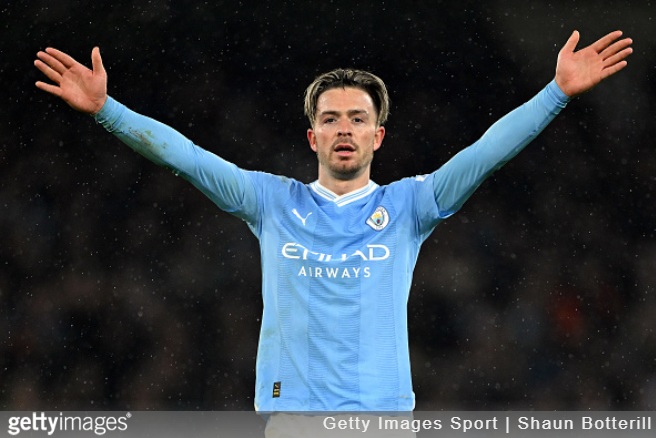Thank you for reading this post, don't forget to subscribe!
Jack Grealish’s career is currently suspended in a state of limbo—a curious halfway house between elite status and uncertainty. Just three summers ago, he was the face of English football’s most expensive transfer, a £100m man and a marquee signing for Manchester City. Today, he’s training alone at the City Football Academy, preparing for a future still unclear, waiting for a move that hasn’t arrived.
This isn’t a story of a dramatic fall from grace, but rather one of how football’s market forces, managerial preferences, and tactical shifts can strand even the most talented players. In Grealish’s case, the catalyst for this purgatory was his omission from City’s squad for the FIFA Club World Cup—a decision interpreted internally and externally as a polite but firm invitation to seek pastures new.
It wasn’t a punishment, and there’s no acrimony between Grealish and City. On the contrary, his return to individual training at the club’s facilities, ahead of the squad’s July 28 reunion, was mutually agreed. He’s working with personal trainer Jamie Reynolds to ensure he remains in peak condition, physically and mentally. But there’s no hiding the subtext: both club and player acknowledge that the best way forward is away.
The waiting game
Despite the clarity of intent, a transfer has yet to materialize. Six weeks have passed since City quietly opened the door for Grealish to leave, and yet potential suitors remain hesitant. The reasons are hardly mysterious. Grealish is still one of the highest earners in the Premier League, and while his talent is undoubted, his role at City never quite evolved beyond that of a rotation option—valuable, but perhaps not £100m valuable. Clubs are watching and waiting, hoping either for the price to drop or for City to relent and accept a loan deal.
There have been reports of interest. West Ham, always ambitious under David Sullivan, have internally discussed a loan offer. But it hinges on the outcome of Lucas Paqueta’s uncertain situation and the vision of head coach Graham Potter. In Italy, Antonio Conte is an admirer, eager to add a left-sided attacker to his Napoli project. But financial limitations—particularly wages—remain a hurdle for a club that has just invested in Kevin De Bruyne, Grealish’s former City teammate. Elsewhere, Everton’s name has been linked, albeit more as an expression of ambition than a concrete plan.
What does Grealish want?
Publicly, Grealish has said nothing. That silence is perhaps telling. A viral clip showed him telling fans at an Oasis concert that he still loves City—a nod to the deep affection he clearly holds for the club and the community that embraced him. Emotionally, he may not yet be ready to walk away completely. That’s why a season-long loan might suit all parties best: Grealish gets playing time and a fresh stage, City retain some value, and everyone avoids the finality of a sale.
The next 12 months are critical for Grealish’s international ambitions. He missed out on Euro 2024 and knows that only regular top-level football will win back his England place ahead of the 2026 World Cup. England head coach Thomas Tuchel, expected to take a pragmatic approach to selections, has reportedly suggested that Grealish would benefit from playing for a club involved in European competition.
The message is clear: it’s not enough to be good, or even great—visibility and relevance matter.
Still loved at City, but on the margins
Despite everything, it’s widely believed that Grealish remains well-regarded within Manchester City. There is no personal rift with manager Pep Guardiola or any ill-will from the club hierarchy. His professionalism has never been in question, and the mutual decision to let him train on-site speaks to the ongoing goodwill. But Guardiola’s system is evolving—and Grealish, who once looked like a player who could help unlock Europe’s most stubborn defences, has not quite kept pace with it.
With the rise of younger, more direct wingers and midfielders—some of them homegrown—Grealish’s languid, ball-retaining style has at times seemed out of sync with City’s blistering tempo. He was valuable in certain tactical setups, but not essential. That distinction, subtle but decisive, is what now drives this search for a new home.
A return to Villa Park?
The most romantic option, and one that inevitably excites fans, is a return to Aston Villa. Bookmakers have shortened the odds, and whispers have circulated. But those close to the player are said to be puzzled by such speculation—there is no indication of an imminent homecoming.
Villa are moving cautiously in the transfer market, and any high-profile arrival, even on loan, would likely depend on outgoings. That said, if Nottingham Forest follow through on their interest in Jacob Ramsey, Villa may be forced to fill a creative gap in midfield or on the left—a role Grealish would slip into with familiar ease.
From a technical standpoint, Grealish’s status as a club-trained player could be a valuable asset for Villa, particularly with UEFA’s squad regulations in European competition. But there’s a difference between possibility and probability, and right now, a return to Villa remains more of a fairy tale than a realistic development.
The bigger picture
Jack Grealish’s situation is emblematic of a wider truth in modern football: reputation alone doesn’t guarantee opportunity. Market economics, tactical evolution, and squad registration rules now dictate a player’s career path almost as much as talent does. For someone like Grealish—immensely gifted but caught between systems and eras—the transition can be painful.
What happens next depends on many variables: the willingness of a club to take a financial gamble, the timing of other transfers, and perhaps even Grealish’s own sense of purpose. But for now, he’s in motion, even if he’s standing still—training alone, waiting for the call that will define the next chapter of his career.
And when it comes, it will almost certainly not be the end. Just a new beginning.



